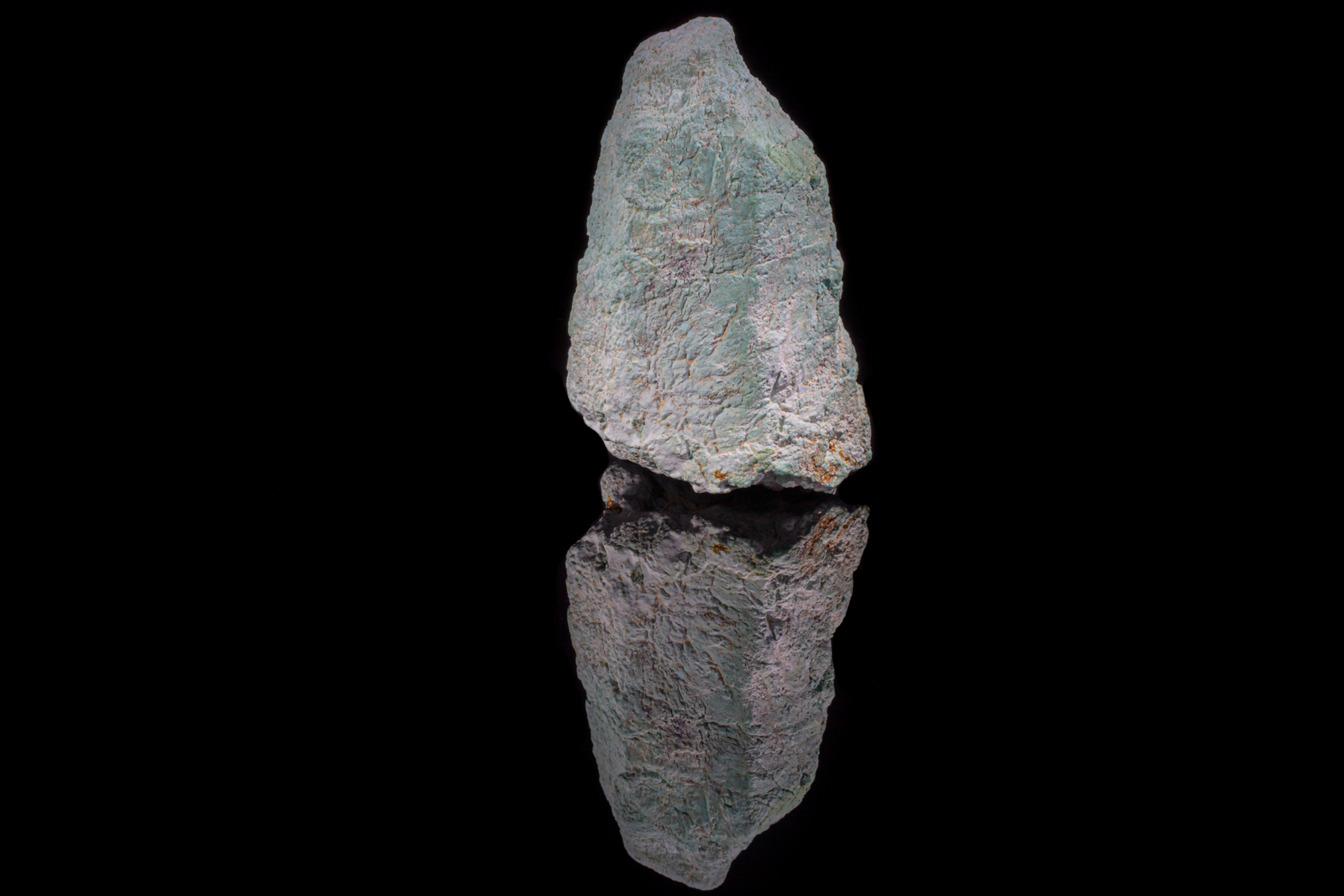Turquoise
Formula: CuAl6(PO4)4(OH)8 · 4H2O
Species: Phosphates
Colour: bright blue, sky-blue, pale green, blue-green, turquoise-blue, apple-green, green-gray
Lustre: Sub-Vitreous, Resinous, Waxy, Dull, Earthy
Hardness: 5 – 6
Specific Gravity: 2.6 – 2.8
Crystal System: Triclinic
Member of: Turquoise Group, Chalcosiderite-Turquoise Series. Planerite-Turquoise Series. The copper analogue of Faustite.
Name: Named from French “turques” or “turquois” meaning “Turkish” the original material found on the south slopes of the Al-Mirsah-Kuh Mountains (Iran), but which found its way to Europe via Turkey. The name was known at least as early as the 17th century C.E. Turquoise and members of its group were redefined by Foord and Taggert in 1998, with turquoise reserved for an end-member composition. Foord and Taggert also noted that most of the gem material labeled “turquoise” is inhomogeneous and that planerite is the most common constituent in commercial “turquoise”.
Isostructural with: Chalcosiderite, Planerite
A secondary mineral occurring in the potassic alteration zone of hydrothermal porphyry copper deposits. Also formed by the action of meteoric waters, usually in arid regions, on aluminous igneous or sedimentary rocks (as vein filling in volcanic rocks and phosphatic sediments). Turquoise was one of the first gemstones to be mined. Turquoise beads dating from about 5000 BC have been found in Mesopotamia. Turquoise was extracted by the Egyptians from sources in the Sinai Peninsula before the 4th millennium BC and records from the reign of Pharaoh Semerkhet (2923-2915 BC detail extensive mining operations that employed thousands of laborers. Turquoise varies in color from sky-blue to green depending on the amount of iron and copper it contains. Crystals are rare, short and occur as prisms. It usually occurs in massive or microcrystalline forms, as encrustations or nodules or in veins. Turquoise occurs principally in arid environments as a secondary mineral, probably derived from decomposition of apatite and copper sulfides, and deposited from circulating waters. The delicate veining caused by impurities in turquoise from some localities is desired by some. In many respects, turquoise is regarded by the Iranians as jade by the Chinese, It has been highly prized in Persia since antiquity. The local turquoise source was the mines of Neyshabur, in the Khorasan region of Iran. Persian turquoise tends to be harder than North American turquoise. It is always sky-blue, never green. It was traded far afield, and was used in the Indus valley civilization od India two millennium BC. Prior to World War I, it was the principal export of Iran, from nearly 100 mines. Turquoise from several sources was first transported to Europe through Turkey, probably accounting for its name. American Indians have worked the numerous deposits in the Southwestern United States sinc AD 1000. Turquoise was first used in Mexico and Central America during the Classic Period of Mesoamerican civilization, between 200 and 900 AD. The source of the gemstone was the Mount Chalchihuitl mine near Cerillos in what is now New Mexico. The use of turquoise spanned more than 1,000 year of Mesoamerican history. The people from the City-state of Teotihuacan, which dominated Mesoamerica from the 4th to the 7th century AD, were among the first to use turquoise in Mesoamerica.. It was still of major importance by the time of the Aztecs, who emerged as a civilization in the 13th century, and ruled a large empire in what is now central and southern Mexico in the 15th and early 16th centuries. Turquoise was used with great technical skills in Mesoamerican mosaics.

 Copyright Charles Camarda - www.camardavisualstudio.com
Copyright Charles Camarda - www.camardavisualstudio.com